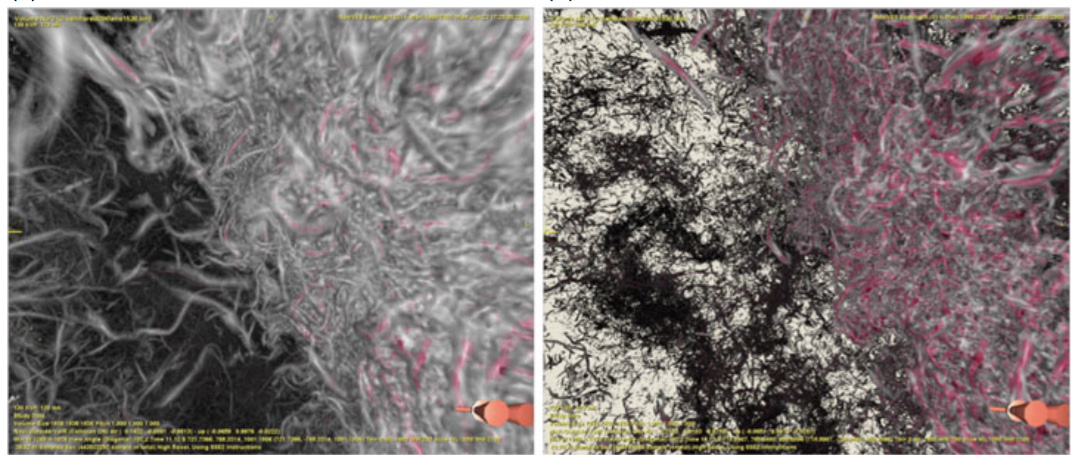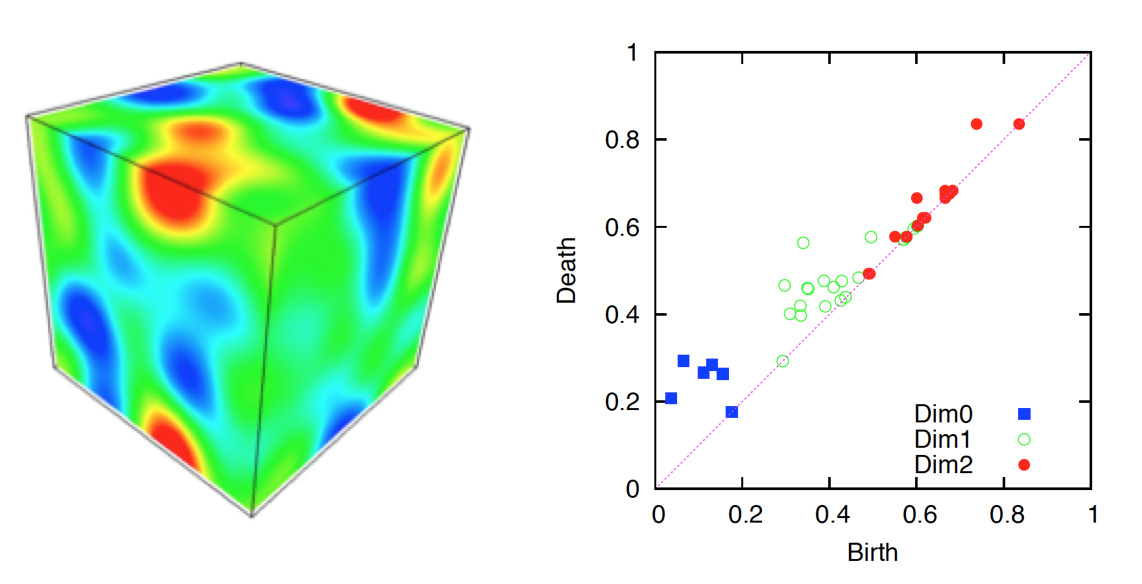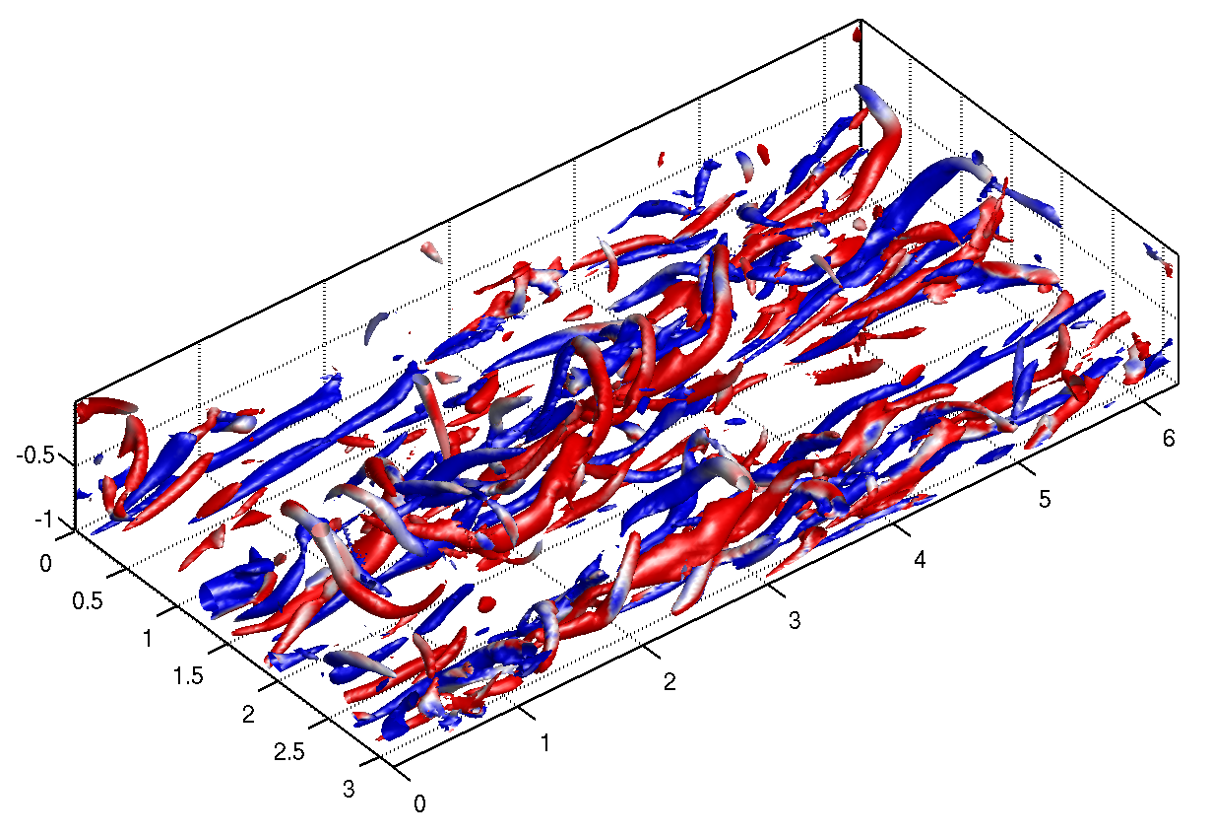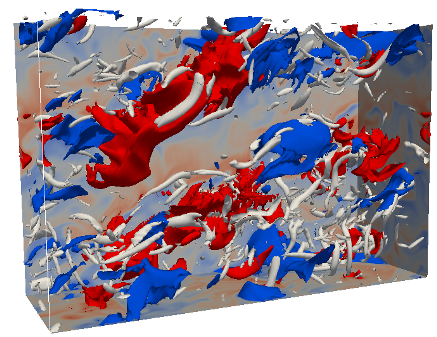Numerical Analysis of Flow Phenomena
Staff
Research Topics
Computational and data science of multi-scale complex flow phenomena using supercomputers; Information reduction, extraction, and visualization of large-scale data of complex flow phenomena by mathematical and scientific methods; Collaborative research for solving problems of flow phenomena in various fields such as astrophysics, meteorology, environmental science, and engineering.
Computational and data science of multiscale/multiphysics complex flow phenomena
|
Atmospheric transportation and diffusion of fine particles and highly efficient and clean combustion in internal combustion engines are themes related to environmental problems. These are multi-scale, multi-physical complex flow phenomena, and understanding of turbulence is indispensable for their essential elucidation. Therefore, research aimed at understanding and predicting various turbulent phenomena is being carried out, by developing highly reliable computational methods for turbulence, performing large-scale numerical simulations by supercomputers, and using various methods to analyze large-scale data. |
 Cluster structure of high vorticity regions in high Reynolds number turbulence obtained by large-scale DNS |
Information reduction, extraction, and visualization of large-scale data of complex flow phenomena by mathematical and scientific methods
|
A method for efficiently extracting important information from the vast amount of data on complex flow phenomena obtained by observations and large-scale numerical simulations is required. Flow visualization and analysis of conditional statistics are effective for understanding turbulence phenomena. Persistent homology analysis enables us to systematically extract remarkable ""changes"" in the spatio-temporal space of scalar fields. By combining these, we would like to develop methods for detecting and understanding important events in complex turbulent flow phenomena. |
 A scalar field and its persistent diagram |
Data-driven computing for prediction and control of wall-bounded turbulence
|
Wall-bounded turbulence significantly contributes to heat transfer and drag on a wall surface, and the prediction and control of turbulent phenomena leads to the efficient use of energy, and the time-series data of turbulent flow fields have been obtained by the numerical simulation. In the future, it is necessary to develop the data-driven prediction and control technique based on a deep understanding of the turbulent flow for the wide application in engineering. We will carry out numerical calculations for various engineering problems and challenge the turbulent flow problem, which is so-called the final problem of classical mechanics, using new techniques of information science such as machine learning in addition to statistical analysis and dynamic system theory. |
 The coherent vortical structures in turbulent plane Poiseuille flow. Flow is from left to right. (red) cloclwise, (blue) anti-clockwise vortices. |
Data-driven dynamical system for modeling and optimization of nonlinear phenomena
|
We can consider turbulent flow as a vector with a large dimension of freedom and a dynamical system, then we can numerically find invariant solutions such as equilibrium solutions and periodic orbits of Navier‐Stokes equations or turbulence model equations. Understanding the role of invariant solutions in the turbulent flow phenomenon would provide some insights into the development of turbulence models and flow control techniques. The dynamical system approach can also be applied for the understanding of the mathematical model itself obtained by machine learning such as deep learning, since it must be common for the phenomenon with strong nonlinearity. Our research aims are following: development of simulation technique of the complicated process in which we can obtain the data of real phenomena, such as multiphase flow, chemical reaction, combustion, mixing of various particles, separation and aggregation processes, although the knowledge of macroscopic or statistical behavior is limited or the detailed simulation is not realistic; and then, development of the technique of optimization and control method which can be applied in a wide range of the engineering field. |
 The stratified homogeneous shear turbulence. (Red, blue), low and high density fluctuation, (gray) vortical structures. |
Publication List
- Extreme dissipation and intermittency in turbulence at very high Reynolds numbers, Gerrit E. Elsinga, Takashi Ishihara, Julian C. R. Hunt, Proceedings of the Royal Society A: Mathematical, Physical and Engineering Sciences 476(2243) 20200591 (2020)
- Second-order velocity structure functions in direct numerical simulations of turbulence with Rλ up to 2250, Takashi Ishihara, Yukio Kaneda, Koji Morishita, Mitsuo Yokokawa, Atsuya Uno,Physical Review Fluids 5(10) 104608-1 - 104608-15 (2020)
- Length Scales in Turbulent Channel Flow, K Morishita, T Ishihara, Y Kaneda, Journal of the Physical Society of Japan 88(6) 064401 (2019)
- Dust Coagulation Regulated by Turbulent Clustering in Protoplanetary Disks, Takashi Ishihara, Naoki Kobayashi, Kei Enohata, Masayuki Umemura, Kenji Shiraishi, ASTROPHYSICAL JOURNAL 854(2) 81 (2018)
- Energy spectrum in high-resolution direct numerical simulations of turbulence, Takashi Ishihara, Koji Morishita, Mitsuo Yokokawa, Atsuya Uno, Yukio Kaneda, PHYSICAL REVIEW FLUIDS 1(8) 082403 (2016)
- Direct numerical simulation of statistically stationary and homogeneous shear turbulence and its relation to other shear flow, Atsushi Sekimoto, Siwei Dong, Javier Jiménez, PHYSICS OF FLUIDS 28 035101 (2016)
- Vertically localised equilibrium solution in the large-eddy simulations of homogeneous shear flow, Atsushi Sekimoto, Javier Jiménez, JOURNAL OF FLUID MECHANICS 827 225–249 (2017)
- Characterisation of minimal-span plane Couette turbulence with pressure gradients, Atsushi Sekimoto, Callum Atkinson, Julio Soria, JOURNAL OF PHYSICS 1001(1) 012020 (2018)

